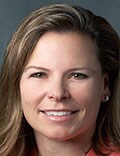Latinx individuals have a lower overall risk of melanoma than non-Latinx Whites (NLW), but they are more likely to be diagnosed with advanced disease, and experience greater mortality. A new qualitative study of Latinx and low-income NLW individuals in California has revealed some of the socioeconomic and community factors that may play a role in preventing early access to care.
Thicker melanomas, which are more likely to be lethal, are on the rise in the United States among people with lower socioeconomic status (SES), as well as African Americans and Hispanics, and both Black and Latinx people are more likely than NLW people to present with stage 3 or stage 4 disease.

Dr Susan Swetter
“That has really prompted us to look at community engagement and outreach and then really understand the qualitative aspects that are driving individuals into higher risk for melanoma, apart from just limited insurance and access to health care,” said Susan Swetter, MD, who presented the results of the study at the annual meeting of the American Society of Clinical Oncology.
Other studies, such as a Boston-area survey published in 2020, suggest that Hispanics are less likely than Whites to know the meaning of the term melanoma (odds ratio, 0.27; P =.0037), suggesting the need for educational efforts. The authors of that study noted that knowledge of melanoma in 2017, when the survey was conducted, remained essentially unchanged since a previous study was published in 1996.
“Our results support a need for better public educational programs, particularly those geared toward minority populations. Educational programs that are culturally relevant and include specific sections for skin of color have been shown to better promote early melanoma detection in individuals of ethnic minorities and may help decrease the ethnic disparities in melanoma-related mortality. At the patient-physician level, dermatologists may educate their patients, including Hispanic patients, should they choose to perform (skin self-examinations) to specifically inspect the extremities and acral areas, given the higher incidence rates of melanoma on those areas in this population,” the authors wrote.
The goal of the new study is to get a better understanding of the factors that affect attitudes toward health care, and the researchers found a complex mixture that including ethnicity, cultural, gender identity, geography, skin color, gender norms, and socioeconomic status (SES).
“Qualitative research can inform our preventive and early detection strategies. For instance, in the Latinx group, there’s a lot of mistrust of health systems, medical providers, and who is providing that knowledge. We have to figure out ways to provide a trusted source of information. Doctors and physicians and health providers tend to be trusted, but there are many barriers to getting lower SES patients into care. We’re now investigating the use of community health workers and even individuals in various settings and community centers, religious settings or religious leaders, where we’ve determined through this focus group research that there is increased trust,” Swetter said.
The researchers assembled 19 focus groups with 176 total adult participants, interviewing them about perceptions of melanoma risk, prevention and screening strategies and their acceptability, and barriers to melanoma prevention and care. The sample include people from urban and semirural areas; 55%-62% of participants self-identified as Latinx or Hispanic and 26%-27% as NLW.
Latinx and semirural participants reported having minimal conversations with family about melanoma prevention, and those who reported having darker skin perceived their risk from skin cancer as lower. Participants who lived in rural areas, were Latinx, or of low SES status indicated that health care access challenges included out-of-pocket costs, past experiences of physicians showing less concern about them, and little confidence that rural physicians had the needed expertise or would make an appropriate referral.
The study is just the first step in a series of efforts to improve melanoma outcomes in high-risk populations, which is being pursued through Stanford University’s Wipe Out Melanoma–California statewide initiative and research consortium.
“What we aim to do is use this knowledge to now design programs to reach the populations who are more likely to present with worse disease, and to prevent that disease from happening. These qualitative analyses are few and far between in the world of melanoma, and we’re really happy to really push this envelope and change the way we deliver preventive and early detection efforts,” said Swetter, who is a professor of dermatology and director of the pigmented lesion/melanoma and cutaneous oncology programs at Stanford (Calif.) University Medical Center. Swetter also chairs the National Comprehensive Cancer Network guidelines for cutaneous melanoma.
The study could also improve care of advanced melanoma. “There’s clear evidence that many of these patient and SES factors, economic and knowledge barriers are the same when it comes to getting patients with advanced melanoma into appropriate care and on clinical trials, and that’s true across all races and ethnicities,” said Swetter.
The ultimate goal of these approaches is to give individuals greater “self-efficacy, such that a person feels more competent to manage his or her own health outcomes. One aspect of this approach is the use of novel technology such as smartphone apps that can track moles or help visualize lesions during teledermatology.
“I think that the future of melanoma prevention and early detection is bright, especially if we incorporate novel technologies and engage patients and their communities in the effort. It’s a different strategy, as opposed to the top-down approach of physicians imparting knowledge and providing the exam. Increasing community engagement is critical to reaching the populations at highest risk for advanced disease and getting them into care and detection early,” Swetter said.
Swetter has no relevant financial disclosures.
This article originally appeared on MDedge.com, part of the Medscape Professional Network.
Source: Read Full Article
